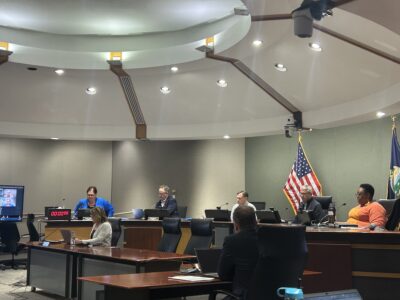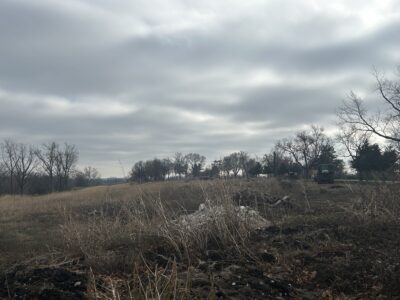Lawrence arborist says city in middle of peak of infestation from emerald ash borers, removing about 150 ash trees per year

photo by: Shutterstock Photo
Emerald ash borer
Arborists in Lawrence managing the infestation from an invasive beetle called emerald ash borers that are affecting ash trees say the period of damage is at a peak, with the city needing to remove about 150 of those trees per year.
Emerald ash borers are an invasive beetle that is originally from eastern Russia and Northeastern Asia. These bugs were first discovered in North America in Michigan and Ontario in 2002, and have since spread to 24 states. Currently, according to the Kansas Forest Service, emerald ash borers have been found in 14 counties in Kansas — all in the northeastern part of the state.
Tyler Fike, the Horticulture Manager for Lawrence’s Parks and Recreation department, said the pest was first discovered in Douglas County in 2015. Its infestation typically follows a bell curve pattern, where it can take about three to five years to establish itself. But once year five hits, the population “balloons” and starts to drastically impact the ash trees in the area.
“We’re kind of in the middle of that heaviest portion of the pest pressure,” Fike said.
The pest feeds just under the ash trees’ barks, eating away in the vascular tissue called phloem, Fike said. The phloem is the part of the tree that spreads around nutrients, but the insects cut off the flow of chemical energy, leaving some parts of the tree healthy while other parts die in a span of two to four years.
“(The tree) is not dying of drought, stress or lack of nutrition, but because it can’t push the sugars out to the upper canopy of the trees,” Fike said.
Efforts to proactively manage the infestation started in 2016 with a two-step approach, Fike said. First, the city inventoried all the ash trees under the city’s ownership, which was around 3,300 of the city’s 10,000 total ash trees. Then, the city looked at the condition of all those trees, removing trees that were already in poor condition and treating trees that were in the best condition with a pesticide. Fike said 10% of those trees received the pesticide — which lasts about two years and provides good control against the emerald ash borers — as a means to “buy time” for the city against the spread of the insects.
The Journal-World reported in 2020 that the city removed 809 ash trees since the program started, and planted 550 replacement trees in addition to the city’s existing tree planting program.
Fike said over the last four years, 601 ash trees were removed by the city — about 150 per year — which is about 18% of the city managed ash trees.
Part of the reason it is crucial to remove the trees is because of the “dieback” around the upper third of the trees. When the infected ash trees begin to die, the wood becomes brittle “very quickly,” which can cause structural hazards if large limbs or the entire tree falls, Fike said.
Trees that have been removed are starting to be replaced, Fike said. The city usually starts to replant trees in the spring or fall because of better soil conditions. Fike said the city has a policy now to not over-plant one type of tree where one pest could affect a huge swath of trees.
“We’re trying to keep a diverse distribution so we don’t run into the same type of problem,” Fike said.
For residents who have ash trees on their property, signs that an emerald ash borer has infected the tree are the upper area losing leaves and having the branches start to die and dense foliage coming off of new branches lower to the ground, under where the borers started the infestation.







